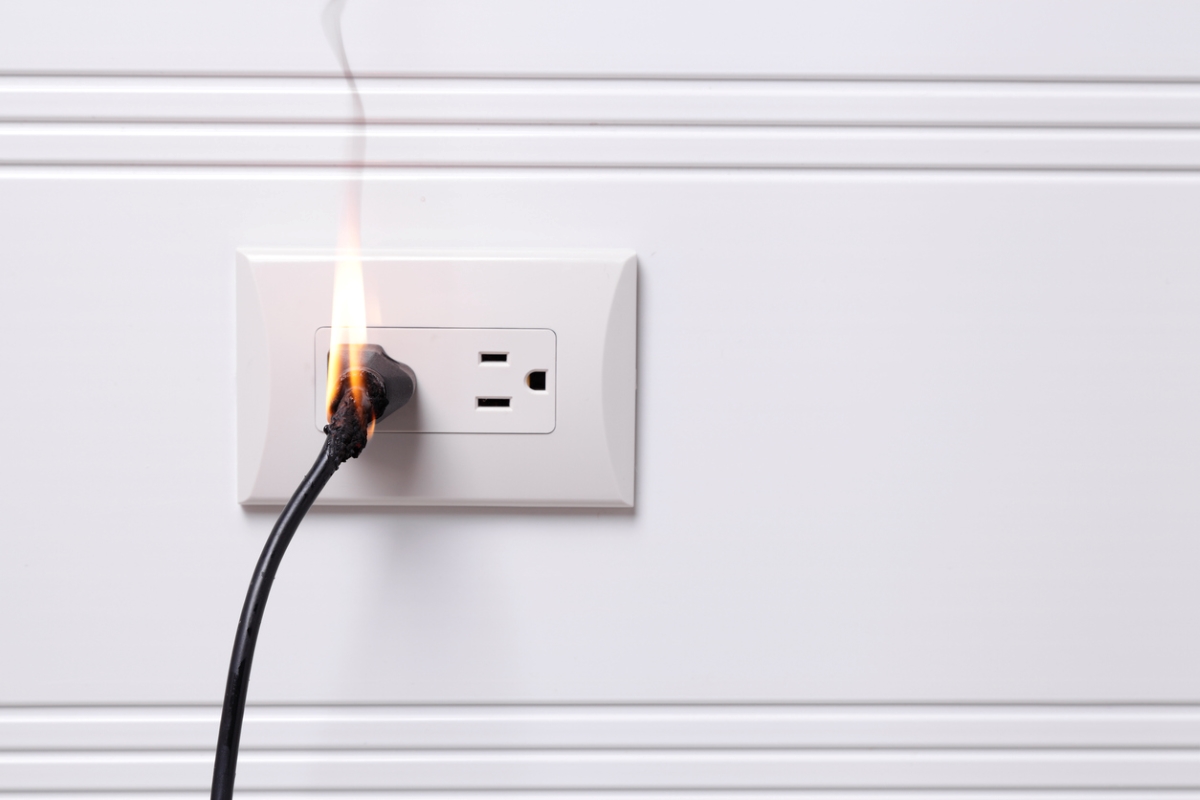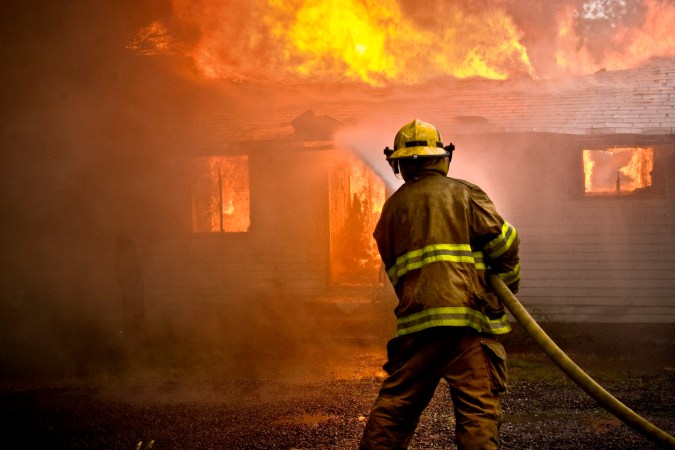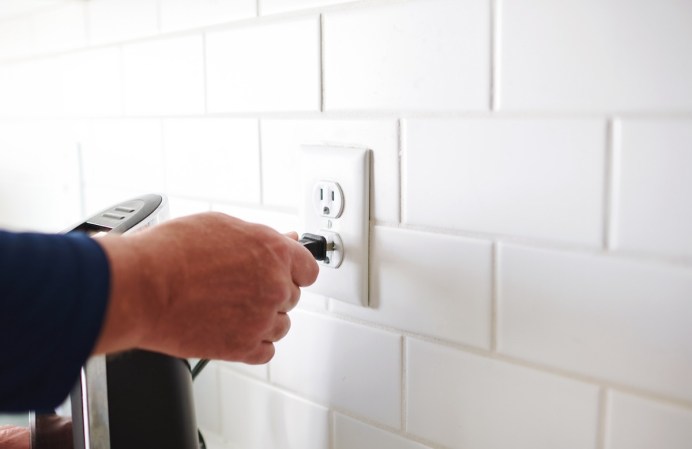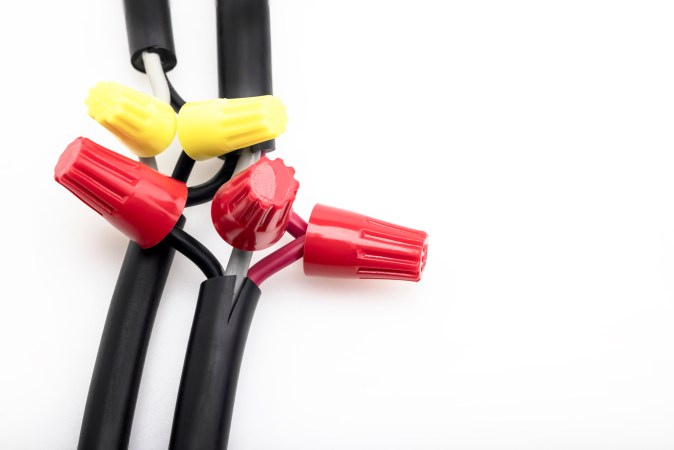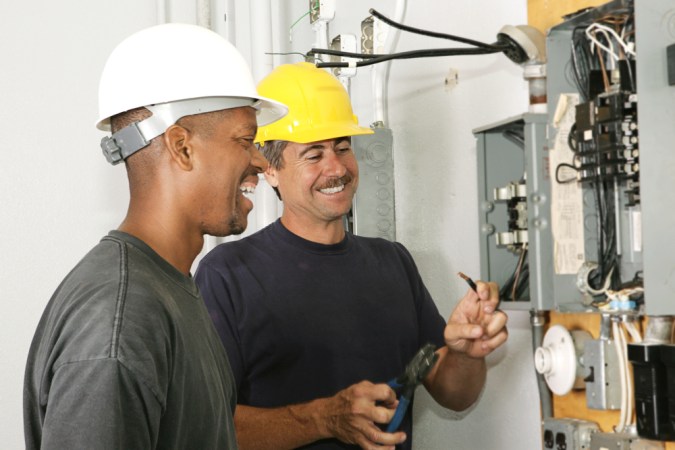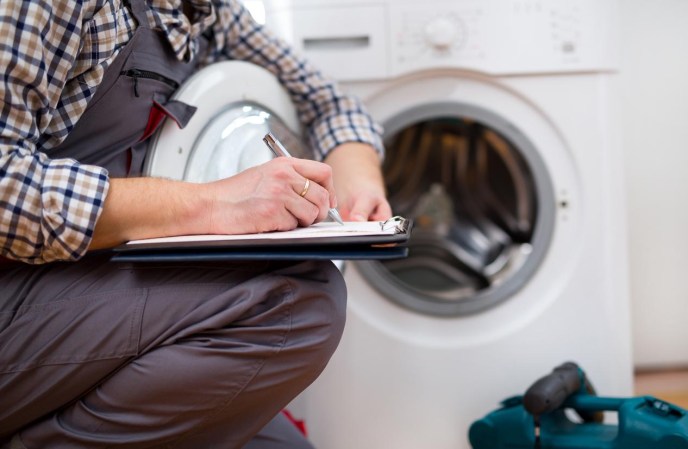We may earn revenue from the products available on this page and participate in affiliate programs. Learn More ›
Home electrical fires account for over 50,000 fires each year, causing about 500 deaths, 1,400 injuries, and $1.3 billion in property damage, according to the Electrical Safety Foundation. Many of these fires start in either the kitchen or bedroom and can quickly spread. The National Fire Protection Association has found that electrical distribution, lighting, and power transfer equipment account for half (49%) of home fires, followed by cooking equipment (15%), heating equipment (9%), fans (6%), air conditioners (3%), and clothes dryers (3%).
These fires can be devastating, so it’s critical to take precautions to prevent them from happening and to be aware of signs that there may be a problem on the horizon. Among the first steps:
- Have your home electrical system thoroughly inspected by a qualified electrician.
- Install and check smoke detectors throughout your home.
- Establish an evacuation plan in case of a fire emergency.
More specifically, understand the most common culprits of home electrical fires and how to prevent them.
RELATED: Solved! What 12 Different Electrical Wire Colors Actually Mean
Faulty Wiring
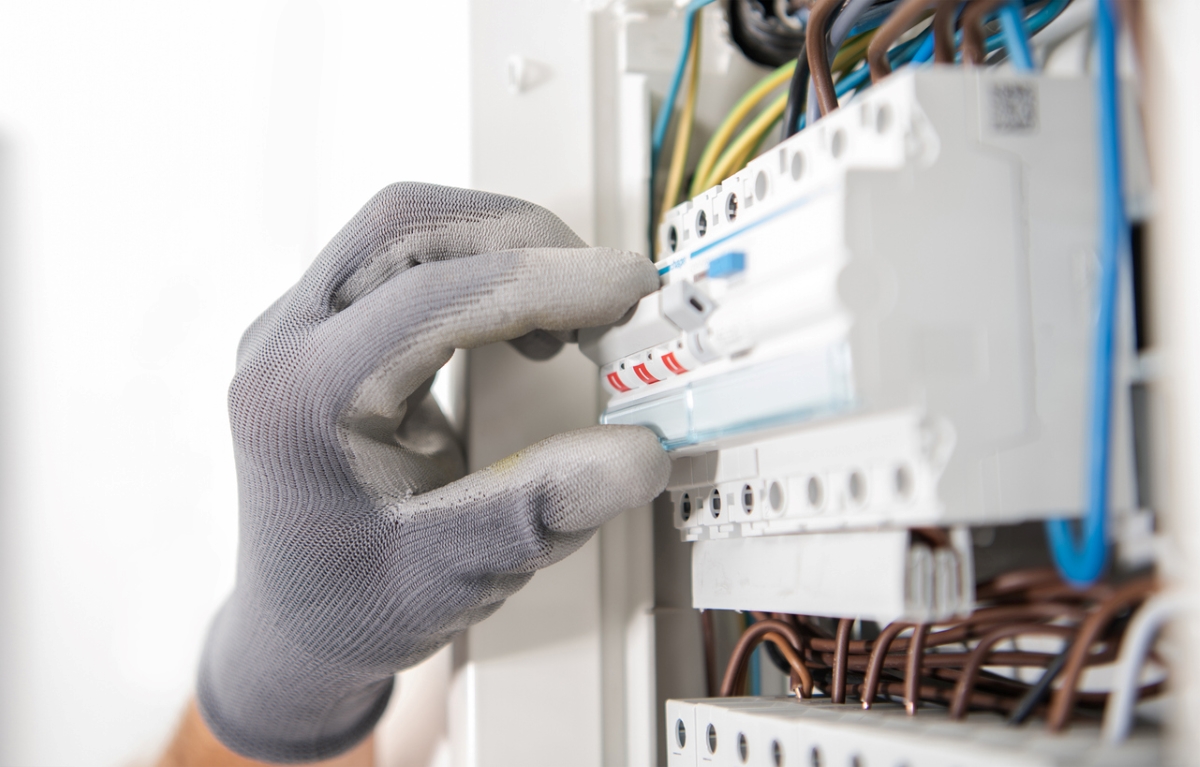
One of the most common causes of an electric fire is loose or faulty wires. They may be worn out, damaged, or frayed. Houses built more than 20 years ago often have old wiring that doesn’t have the capacity to keep up with the demand of modern technology’s energy consumption. Warning signs include power outages, blown fuses, circuit breaker overloads, sparks or shocks from outlets or appliances, and flickering lights when using certain appliances. To stay safe, it’s best to hire a qualified electrician to inspect your home and replace any old or damaged wiring.
RELATED: How Much Does It Cost to Rewire a House?
Electric Vehicles
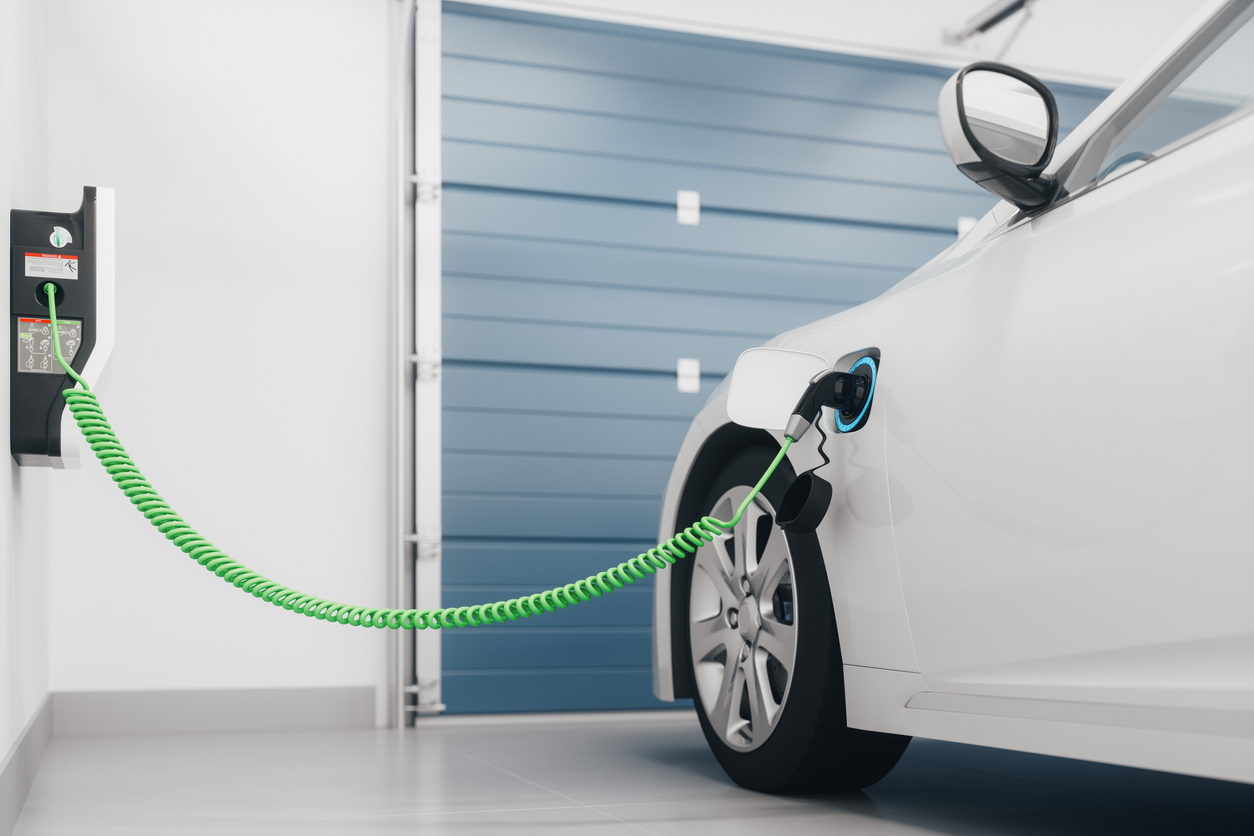
With electric vehicles (EVs) gaining in popularity, there are more news stories about fires related to this technology. However, EV fires are much less common than many people realize. For every 100,000 cars, there were 1,530 fires from gas-powered vehicles and only 25 for EVs, according to data from the Bureau of Transportation Statistics and the National Transportation Safety Board analyzed by researchers from Auto Insurance EZ. Nonetheless, it is important to take the following safety steps: purchase a charging device certified by a nationally recognized testing laboratory; have a qualified electrician install a new, dedicated circuit for the EV charger; plug the charger directly into an outlet designed to handle the amperage of the charging device; never use a multiplug adapter or extension cord; follow the manufacturer’s guidelines when charging the vehicle; and never use a damaged charger.
RELATED: 12 Surprising Pros and Cons of Electric Cars
Space Heaters
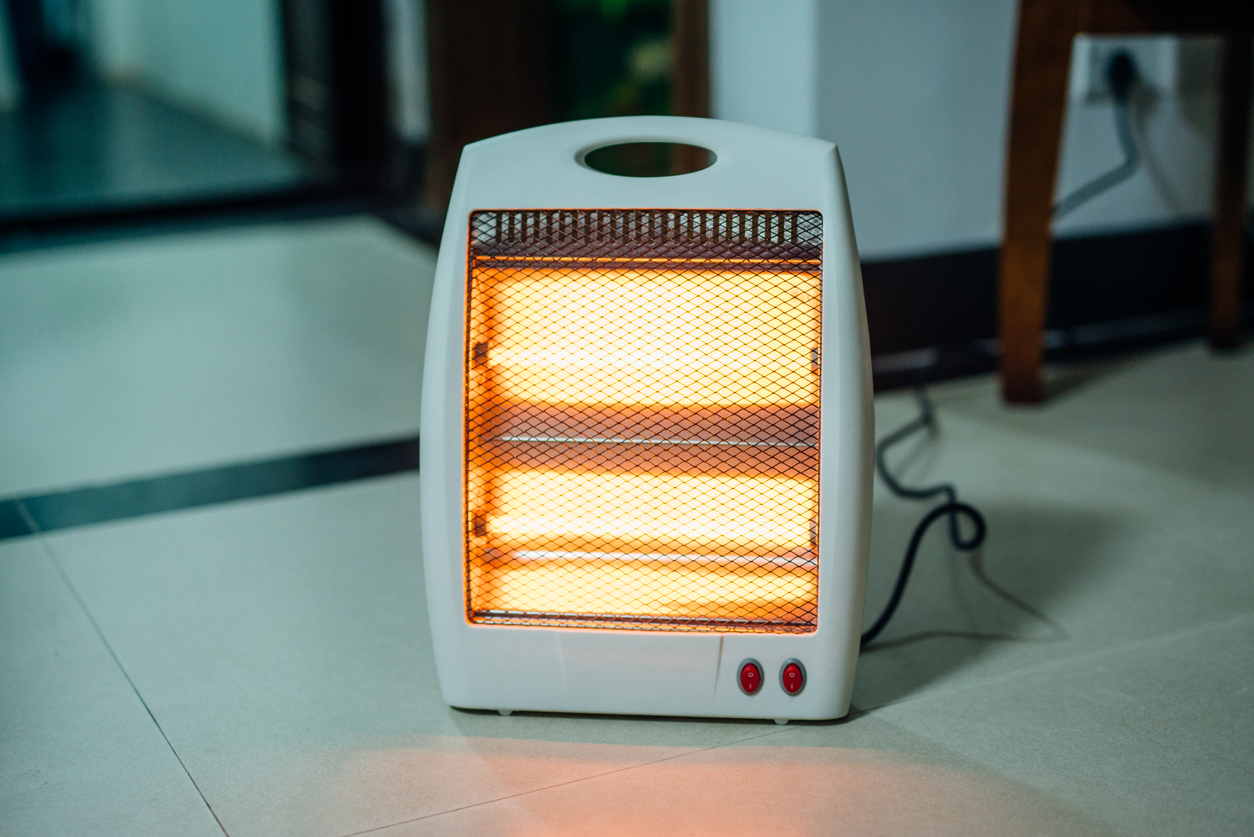
Portable space heaters are a common culprit of electrical house fires. They heat up quickly and can ignite flammable materials immediately, such as nearby curtains, bedding, towels, rugs, or upholstery. To prevent space heater fires, the National Fire Protection Association recommends taking the following precautions:
- Purchase a heater with the seal of a qualified testing laboratory.
- Keep it at least 3 feet away from anything that can burn, including people.
- Choose one with a thermostat and overheat protection.
- Place the heater on a solid, flat surface.
- Make sure it has an auto shut-off in case it tips over.
- Plug it directly into the wall outlet and never use an extension cord.
- Always turn it off and unplug it when not in use.
RELATED: The Best Non-Electric Heaters
Overloaded Outlets
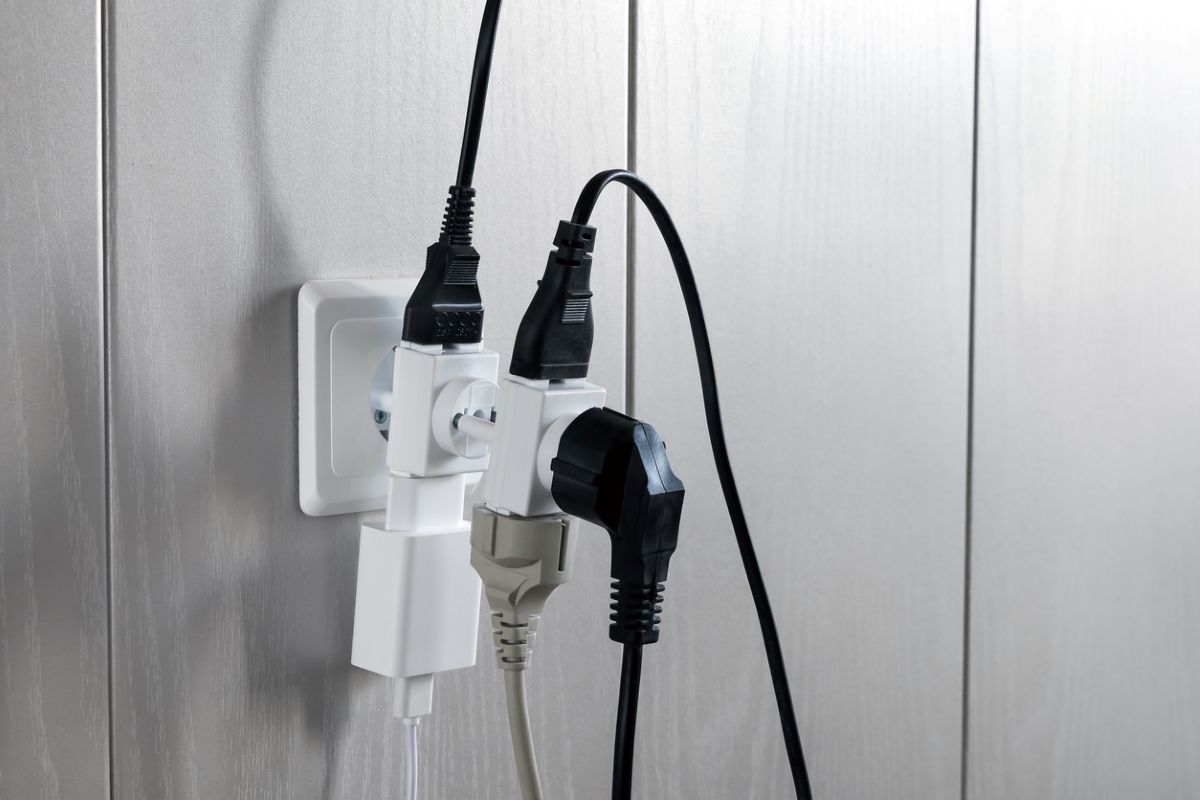
Overloading outlets is a sure way to start an electric fire. There is a limit to how much electrical load each outlet can handle. When too many devices draw power from an outlet, it can cause a circuit to overload or a blown fuse, which can start a fire in seconds. Avoid an electrical fire by minimizing the number of appliances plugged into an outlet, unplugging appliances when not being used, and always using a surge protector. Consider hiring an electrician to install additional sockets in high-use areas like the kitchen or entertainment center to help spread out the electrical burden.
RELATED: 15 Things You Should Never Plug Into a Power Strip
Lamps and Lighting
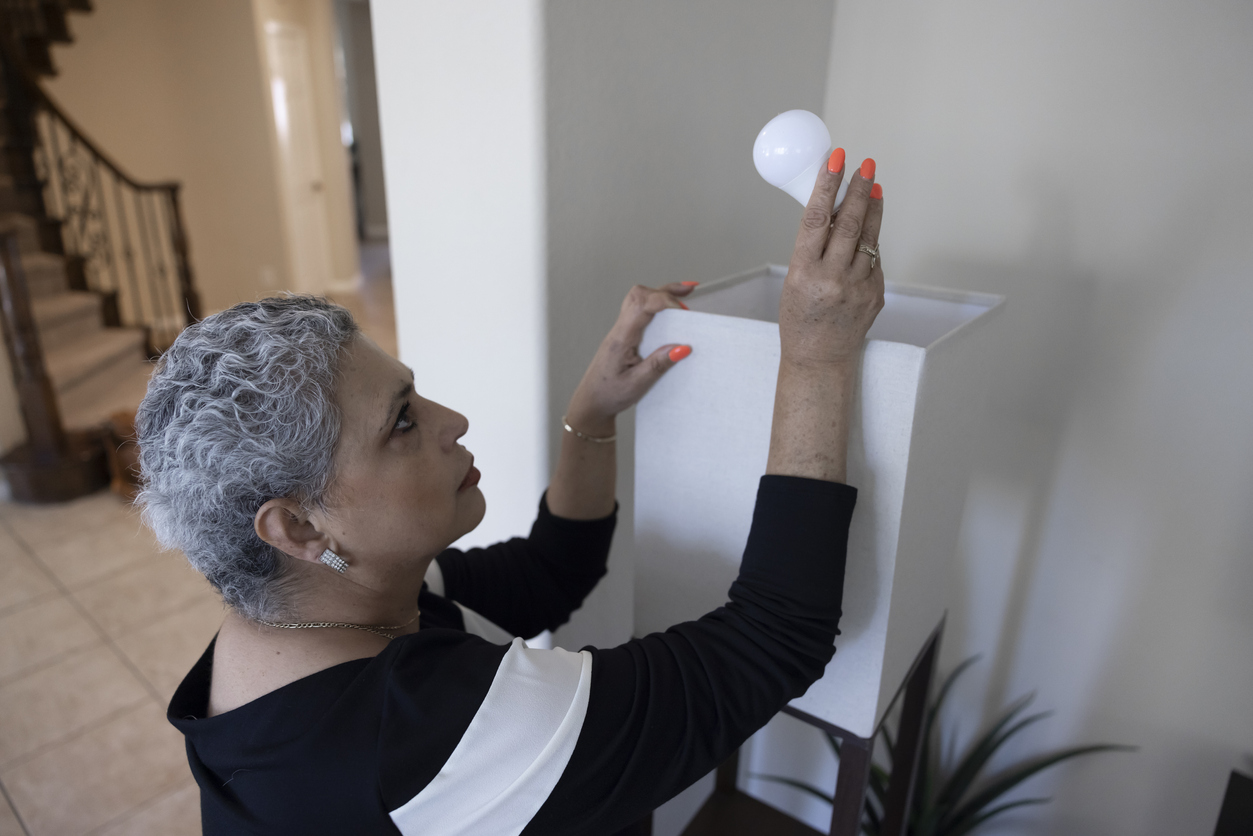
Lamps and lighting are linked to electrical fires for a variety of reasons. Lights that have been left on for an extended period of time can trigger fires if the switch is corroded. Lamps with exposed filaments and those set on uneven surfaces can also be a hazard. Next, poorly installed light fixtures can lead to a fire. Covering a lamp with a makeshift cloth lampshade may also result in a fire. Finally, using bulbs with excessive wattage can cause them to overheat and catch on fire. Avoid starting a fire by always using the recommended light bulb wattage for the fixture, keeping lamps on flat surfaces and away from items that can burn, and only using lampshades designed to fit the shape and size of the fixture.
Electric Bikes

Electric bicycles and electric scooters, or e-bikes and e-scooters, are known to catch fire due to faulty charging equipment, improper charging practices, and overloaded electrical circuits. They are powered by a lithium-ion battery that can overheat, catch on fire, and even lead to explosions, according to the National Fire Protection Association. To prevent such fires, only purchase models approved by a nationally recognized testing lab; avoid continuing to charge the battery once it’s fully charged; never use charging equipment that didn’t come with your device; and stop using the equipment if the battery shows signs of damage, such as an unusual odor, change in color, too much heat, change in shape, leaking, smoking, or not keeping a charge.
Clothes Dryers
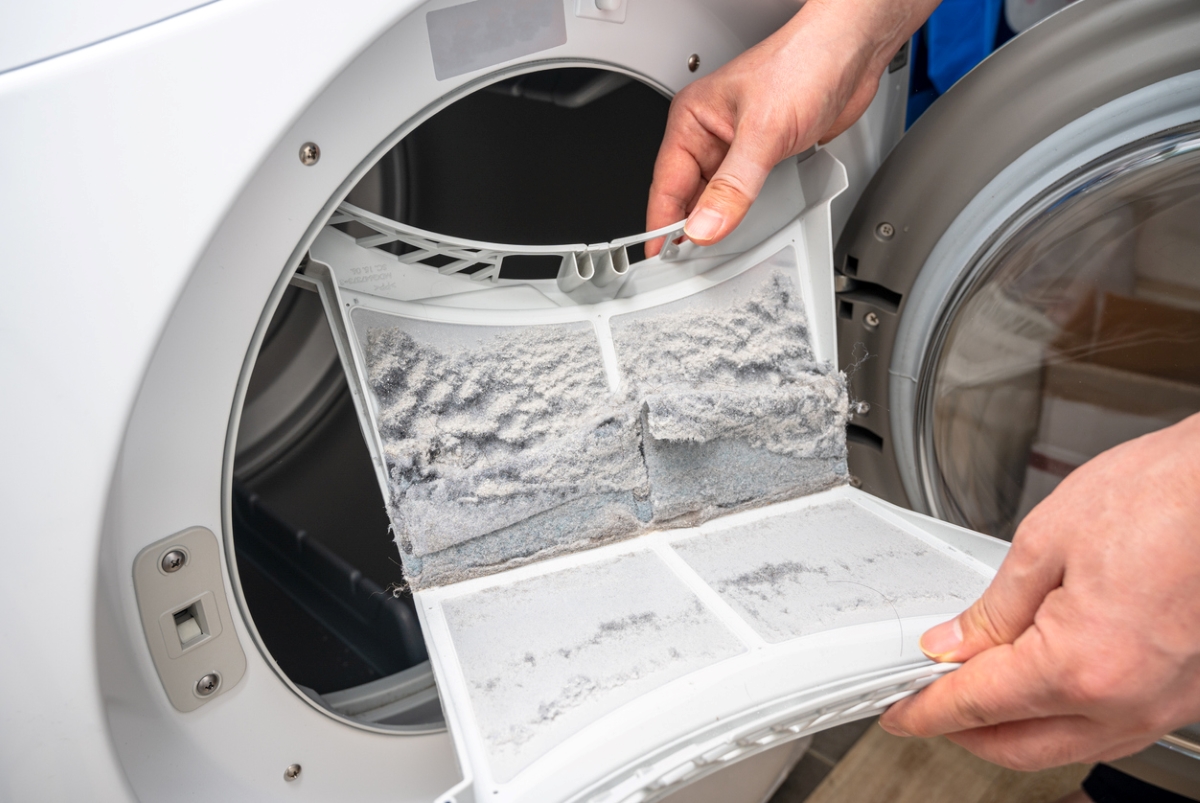
Clothes dryers can also ignite an electrical fire, often because too much lint has accumulated in the dryer vent. Be sure to clean lint before or after each load of laundry; some dryers have indicators to alert you when lint has built up and blocked the vent. Other ways to prevent the clothes dryer from catching on fire include:
- Have the dryer installed and serviced by a professional.
- Do not use the dryer without a lint filter.
- Make sure the air exhaust vent pipe is not restricted.
- Check that the outdoor vent flap will open when the dryer is operating.
- Use the right plug and outlet.
- Make sure the machine is connected properly.
- Keep the area around the dryer clear of items that can burn, such as cardboard boxes, cleaning supplies, and clothing.

